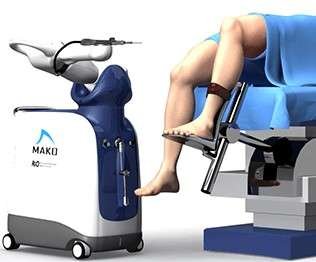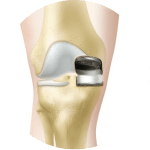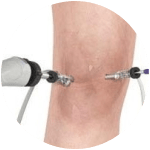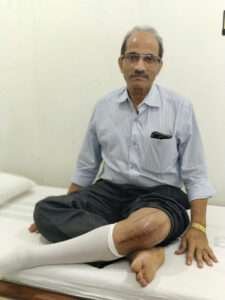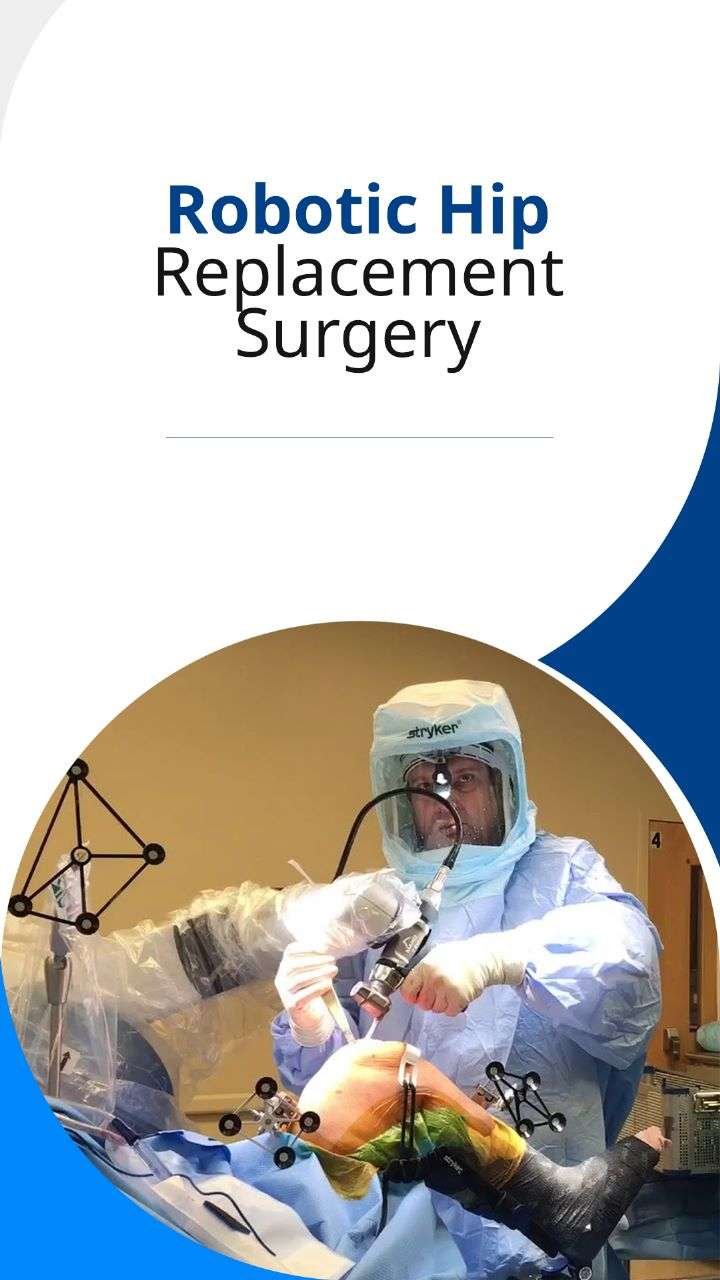
The Robotic Revolution in Orthopedics: Exploring the Advantages of Robotic Hip Replacement Surgery
In recent years, technological advancements have propelled the field of orthopedic surgery into a new era, marked by the integration of robotics into various surgical procedures. One remarkable advancement is the utilization of robotic systems in hip replacement surgery, which is transforming the way surgeons approach this common orthopedic procedure. Robotic hip replacement surgery, also known as robot-assisted hip replacement surgery or robot-assisted hip surgery, represents a significant leap forward in terms of precision, patient outcomes, and overall surgical experience.
Understanding Robotic Hip Replacement Surgery
Hip replacement surgery, also known as hip arthroplasty, is a procedure in which a damaged or deteriorated hip joint is replaced with a prosthetic implant to alleviate pain and improve mobility. Traditionally, this procedure has been performed manually by skilled orthopedic surgeons. However, the introduction of robotics into the surgical landscape has revolutionized the process.
Robotic hip replacement surgery involves the integration of advanced robotic systems into the surgical procedure. These systems are designed to work collaboratively with the orthopedic surgeon to enhance surgical accuracy and precision. Before the surgery, the patient’s unique anatomy is captured through advanced imaging techniques, creating a detailed three-dimensional model. This model serves as a blueprint for the robotic system to assist the surgeon in planning and executing the procedure.
Advantages of Robotic Hip Replacement Surgery
1.Enhanced Precision
One of the most significant advantages of robotic hip replacement surgery is the unparalleled precision it offers. The robotic system assists the surgeon in accurately placing the prosthetic implant, ensuring optimal alignment and fit. This precision contributes to improved joint function and longevity of the implant.
2.Personalized Approach
Each patient’s anatomy is unique, and robotic systems allow for a personalized approach to surgery. The preoperative imaging and planning enable the surgeon to tailor the procedure according to the patient’s specific needs, leading to better outcomes.
3.Minimized Trauma
Robotic hip replacement surgery is associated with reduced trauma to surrounding tissues. The robotic tools are designed to make smaller incisions and use minimally invasive techniques, resulting in quicker recovery times and reduced postoperative pain.
4.Reduced Risk of Complications
The accuracy offered by robotic systems leads to a reduced risk of complications, such as implant misalignment or instability. This contributes to a lower likelihood of revision surgeries and improved patient satisfaction.
5.Shorter Hospital Stays
Patients undergoing robotic hip replacement surgery often experience shorter hospital stays compared to traditional procedures. The minimally invasive nature of the surgery and the precise implant placement contribute to faster recovery and rehabilitation.
6.Faster Rehabilitation
With improved surgical accuracy, patients can begin the rehabilitation process sooner. This accelerates the restoration of joint function and helps patients regain their mobility faster.
The Role of the Robotic Orthopedic Surgeon
In the realm of robotic hip replacement surgery , the role of the orthopedic surgeon evolves into that of a collaborator with the robotic system. The surgeon remains in control throughout the procedure, using the robotic tools as an extension of their expertise. The combination of human skill and robotic precision creates a synergistic approach that optimizes patient outcomes.
A Pioneer in the Field: Dr. Bakul Arora
At the forefront of the robotic revolution in orthopedics is Dr. Bakul Arora, a distinguished robotic orthopedic surgeon who has embraced and championed the use of robotic systems in hip replacement surgery. Dr. Arora’s innovative techniques and extensive experience have earned him recognition as a leader in the field. His commitment to integrating cutting-edge technology with surgical expertise has translated into improved patient outcomes and a new standard of care.
The Arora Clinic: Transforming Orthopedic Surgery
Dr. Bakul Arora’s Arora Clinic stands as a testament to the potential of robotic technology in orthopedic surgery. The clinic has become a center of excellence for robotic hip replacement surgery, drawing patients seeking the benefits of precision, personalized care, and faster recovery. With state-of-the-art robotic systems and a team of skilled professionals, the clinic embodies the future of orthopedic surgery.
Beyond Hip Replacement: Robotic Knee Replacement Surgery
While robotic hip replacement surgery has gained significant attention, the robotic revolution extends to other orthopedic procedures as well. Robotic knee replacement surgery is another groundbreaking application of robotic technology in orthopedics. Similar to hip replacement, the precision and personalized approach offered by robotic systems have the potential to revolutionize knee replacement procedures, enhancing patient outcomes and overall surgical experiences.
Conclusion
The integration of robotics into orthopedic surgery, particularly in procedures like hip replacement, has ushered in a new era of precision and personalized care. Robotic systems, such as those pioneered by Dr. Bakul Arora at the Arora Clinic, are transforming the way surgeons approach surgery, leading to enhanced patient outcomes, reduced complications, and faster recoveries. As the field continues to evolve, the robotic revolution in orthopedics promises to reshape the landscape of surgical practices, providing patients with a brighter and more pain-free future.
FAQS
The recovery time for a robotic hip replacement varies from patient to patient. Generally, patients can expect to stay in the hospital for a few days after the surgery. However, the full recovery period may range from 4 to 6 weeks before patients can resume normal daily activities. Physical therapy plays a crucial role in the recovery process, helping patients regain strength and mobility in the hip joint.
The duration of robotic hip surgery depends on several factors, including the complexity of the case and the surgeon’s experience. On average, robotic hip surgery takes approximately 1 to 2 hours in the operating room. The advanced robotic technology allows for precise and efficient movements, contributing to shorter surgical times compared to traditional methods.
The cost of robotic hip replacement in India can vary depending on the hospital, surgeon’s fees, location, and the specific implant used. Generally, robotic hip replacement surgery may be slightly more expensive than traditional hip replacement due to the advanced technology involved. However, it’s essential to discuss the cost with the healthcare provider, as some insurance plans may cover a portion of the expenses.
Both traditional and robotic hip replacement surgeries are effective in treating hip joint issues. However, robotic hip replacement offers several advantages, including enhanced precision, reduced complications, and quicker recovery. The choice between the two surgeries depends on the patient’s individual condition and the surgeon’s recommendation
Robotic hip replacement is considered an improvement over traditional hip replacement due to its greater accuracy and control. The robotic arm aids the surgeon in executing the surgery with exceptional precision, resulting in improved implant placement and better outcomes for patients. Additionally, robotic surgery typically leads to a faster recovery and reduced post-operative pain.
Robotic hip replacement surgery has shown promising success rates. While individual results may vary, studies have indicated high rates of satisfaction among patients who have undergone the procedure. The advanced technology of robotic surgery contributes to its success by minimizing complications and improving the overall quality of life for patients.
Yes, robotic surgery often leads to a faster healing process compared to traditional surgery. The minimally invasive nature of robotic hip replacement involves smaller incisions, resulting in reduced tissue trauma and quicker recovery times. Patients typically experience less post-operative pain and can return to their regular activities sooner than with conventional surgery. So robotic hip surgery recovery is very faster then traditional hip surgery.
Robotic hip replacement surgery is designed to be as minimally invasive and pain-free as possible. While some discomfort is expected after any surgical procedure, advancements in pain management techniques and smaller incisions used in robotic surgery contribute to reduced post-operative pain for most patients.
Robotic hip replacement surgery may be slightly more expensive than traditional hip replacement due to the advanced technology involved. However, it’s essential to consider the potential benefits and improved outcomes associated with robotic surgery, which may justify the added cost for some patients.
Most patients can begin walking with the assistance of a walker or crutches shortly after robotic hip replacement surgery. As the recovery progresses and physical therapy is incorporated, patients typically regain the ability to walk independently within a few weeks. The exact timeline may vary based on the individual’s health and response to rehabilitation.
Patient preference for robotic hip replacement surgery is increasing due to its reputation for precision, quicker recovery, and reduced post-operative pain. Many patients appreciate the benefits offered by robotic technology and are willing to choose this advanced approach for their hip replacement surgery. However, individual preferences may vary, and it’s essential to consult with a qualified orthopedic surgeon to determine the most suitable surgical option for each patient’s specific needs.
Thank You "Times Group" for felicitating Arora Clinic for "Excellence in Patient Care"
We are really honored to receive this and we will continue to serve the society better than ever We aim to provide the world-class Knee/Hip Replacement Surgical (Minimal Invasive Surgery) treatment to every patient suffering from knee or hip pain and at the same time make their life pain-free and happy.
Our Services
Are you looking for Best Knee Replacement Surgeon?
Then you are at Right Place
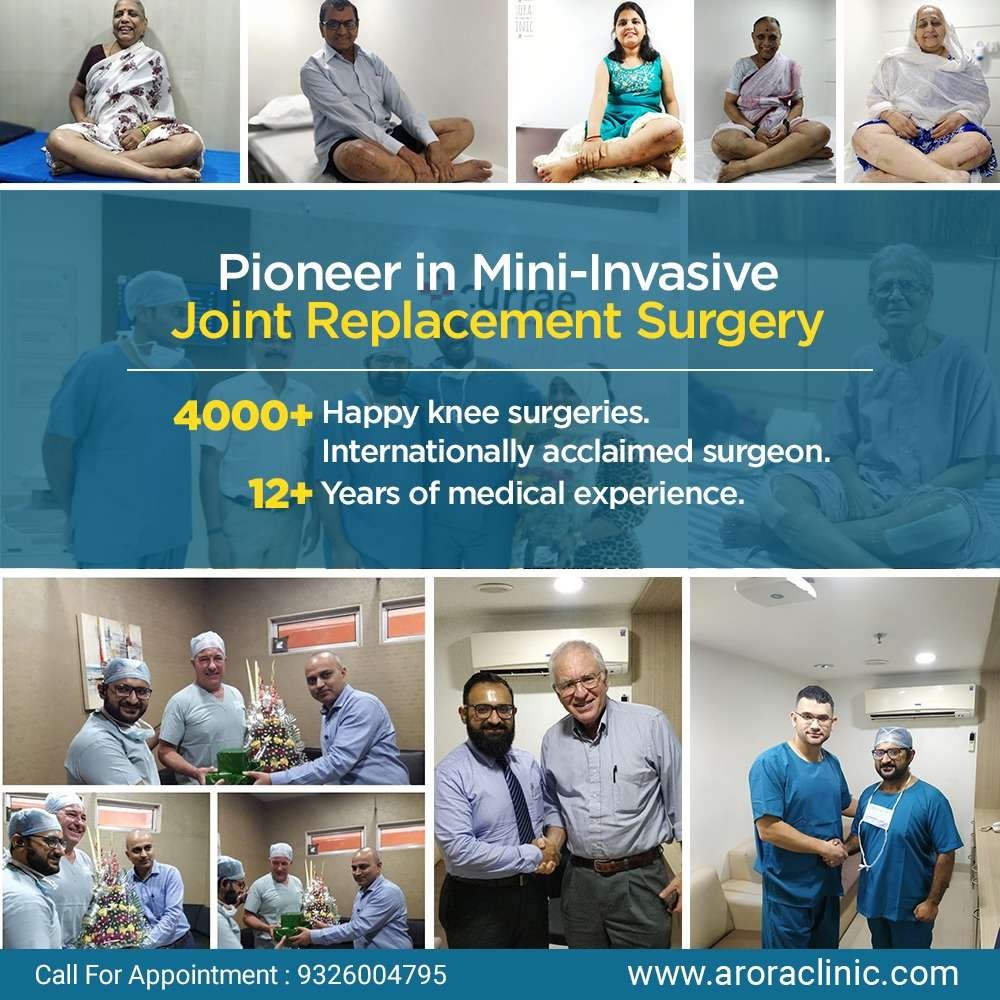
Dr. Bakul Arora’s Joint Replacement Clinic is also known as “Arora Clinic” which is located at Hiranandani Meadows in Thane, within a very convenient proximity to Mumbai. Arora Clinic dedicated clinic for Knee Replacement surgery and all kinds of Orthopaedic treatments and surgeries
The Arora Clinic is one of the most advanced Orthopaedic clinic in Thane region and dedicated to providing the best, personalised healthcare with a breadth of surgical and medical expertise. Arora Clinic offers the modern surgical treatments like “Minimally Invasive Knee Replacement Surgery” which is also called as “PAIN-LESS SURGERY” for any complex knee diseases.
About Surgeon
Dr. Bakul Arora is a Consultant Joint Replacement & Orthopaedic Surgeon is one of the leading Knee Replacement Surgeon in Thane and Mumbai with over 4000+ successfully surgeries. Dr. Bakul Arora specialises in Mini-invasive techniques which offer multiple benefits to patients. He does the surgery using Subvastus approach for Knee Replacement surgery and Direct Anterior Approach for Hip replacement Surgery . This new techniques has many advantages for patients like its pain-less , stich-less surgery, patients walks on the same day after surgery, no blood loss, faster recovery etc.


Patients Review on Arora Clinic
International Patients Videos
FAQS
Knee replacement is required for advanced arthritis of the knee joint, producing painful limitation of movements and restriction in activities of daily living. Knee replacement as a solution should be offered when all non–surgical methods of treatment failed and painkiller medicines and injections also failed to reduce the Knee and hip pains.
Knee replacement can be total or unicondylar, depending on the number of compartments involved. Among the total knee replacement, there are two popular designs- Cruciate Retaining, and Posterior Stabilized. The decision for the design is best taken by the operating orthopedic surgeon based on the integrity of ligaments. Patella resurfacing as a routine is a debatable subject.
Yes, most knee replacement surgeries are minimally invasive, with numerous benefits to the patient, including smaller incisions, less tissue trauma, bleeding and post–operative pain, shorter hospital stays, faster recovery, and earlier return to work and activities — in weeks rather than months. Advantages of Minimally Invasive Knee Replacement Surgery. Patients Start walking in few hours of surgery. Patients start climbing the staircase from second day of his surgery. Patients Discharge with in 3 Days from the Hospital after surgery. No blood loss during the surgery, no blood Transfusion required. Less Physiotherapy.( No Physiotherapist required for home) Less Antibiotic. Stitchless Surgery. Recovery time is just two – three week.
Bilateral knee replacement in the same sitting, can be performed if both the knee joints are damaged to the same extent, however, the medical condition of the patient, and bone quality must be kept in consideration.
Surgery through Minimally Invasive technique patients start walking on the same day and staircase climbing starts from the second day of surgery. Patients can resume his work after 3 – 4 week.
The most significant risks include Infection, Deep vein thrombosis,and Aseptic loosening of implants. The risks correlate with the co-morbid medical condition, and must be discussed with the patient before surgery.
Patients normally require hospitalization for 3-4 days in single knee replacement, and up to 5-6 days in both knee replacement surgery
A single knee replacement takes approximately 90 min- 2 hours. Both knee replacement surgery takes approx 2-3 hours.
Years ago, knee replacement surgery was reserved for elderly patients due to a high complication rate and lack of implant durability. Modern techniques have allowed orthopaedic surgeons to base surgical decisions on a patient’s pain and disability, and not necessarily chronological age. Most patients who undergo knee replacement are between the ages of 50 and 80, but surgeons evaluate patients individually and primarily on their physiologic age and demands.
Patients can resume his/her light work after discharge from the hospital, no need for rest.
Patients are given epidural anesthesia for surgery, and post op pain relief. They are expected to follow instruction from physiotherapist regarding muscle training.
News Events


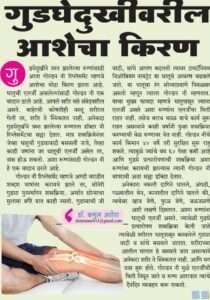

Locate Our Clinic
OUR HOSPITAL PARTNERS
MUMBAI
⇒ Wockhardt Hospital Mumbai Central, Mira road & Vashi
⇒ Apollo Spectra Hospital, Tardeo and Chembur
⇒ Cloud 9 Hospital, Malad
⇒ Criticare Hospital, Andheri
THANE
⇒ Arora Clinic, Hiranandani Meadows
⇒ Bethany Hospital, Vasant Vihar
⇒ Currae Hospital, Kapurbawdi
⇒ Horizon Hospital, Ghodbunder
⇒ Infinity Hospital, Majiwada
⇒ Lakecity Hospital, Khopat
⇒ Oscar Hospital, Majiwada
⇒ Drone Hospital, Bhiwandi


